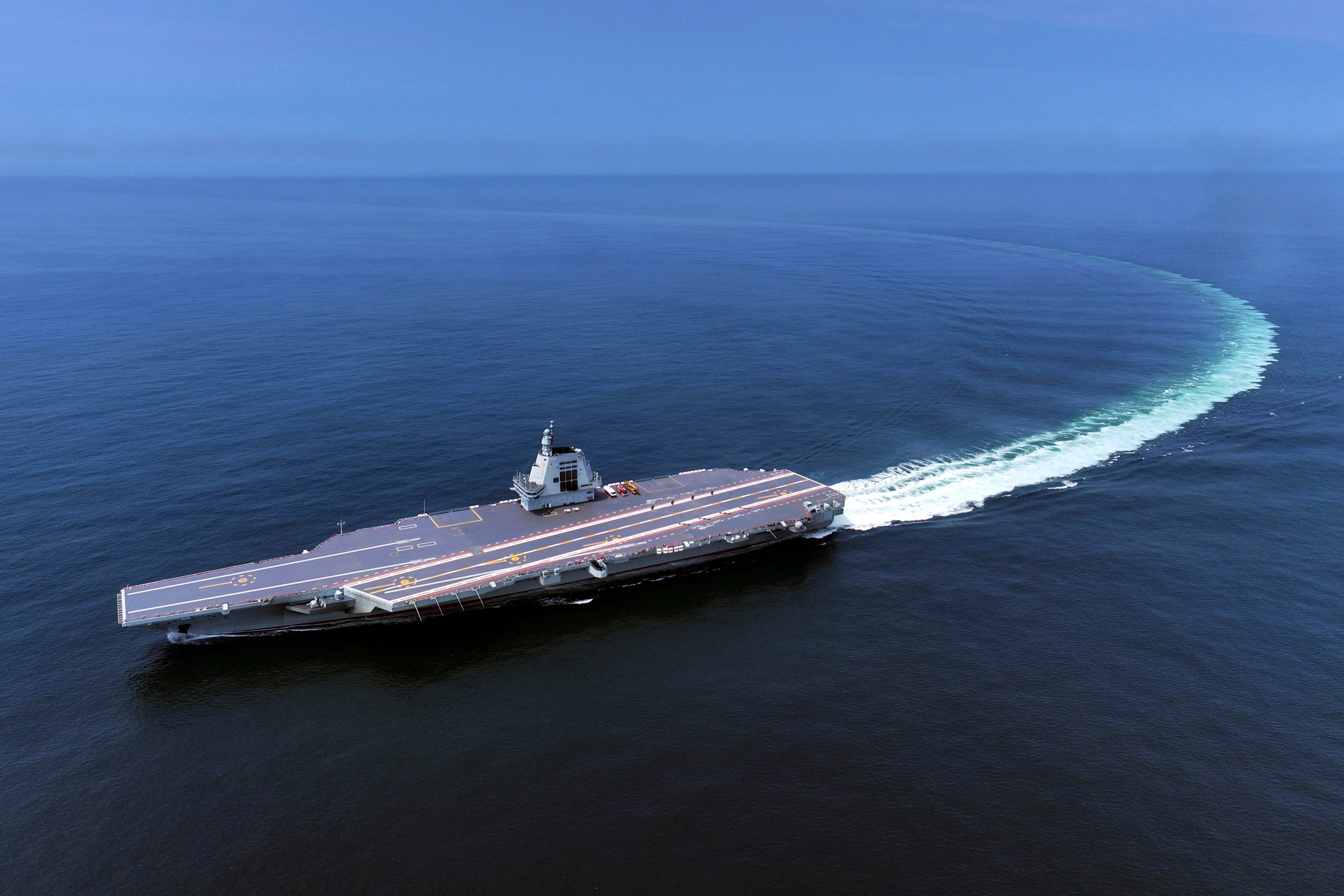By Liu Zhen
Copyright scmp

China’s Fujian aircraft carrier, which is expected to be commissioned soon, is likely to be based in the South China Sea, according to military observers.
Escorted by two destroyers, the third and most advanced carrier of the People’s Liberation Army (PLA) Navy departed from its shipbuilding yard in Shanghai last week, transited through the Taiwan Strait and entered the South China Sea.
The Fujian headed to the waters for “scientific research experiments and training missions”, a “standard arrangement in the aircraft carrier construction process”, the navy said last week.
The movements are the same as the final phase the aircraft carrier Shandong underwent in 2019. At that time, after a month of “scientific research experiments and training missions” in the South China Sea, the PLA Navy’s second carrier was delivered to the PLA at the naval base in Sanya, in Hainan.
The development last week has raised speculation that the Fujian will soon enter service and will also be based in Sanya. If confirmed, two of China’s three active carriers will be stationed at the modern naval base within the PLA Southern Theatre Command, which oversees the South China Sea.
China’s navy has two carrier home ports. The other is run by the Northern Theatre Command Navy in Qingdao, where the first carrier, Liaoning, is based. Both bases have the capacity to host at least two carriers.
Directly commanded by the Central Military Commission, the aircraft carriers are not part of any theatre’s navy and can be deployed to any sea areas as needed.
Sending the Fujian to the South China Sea could be a signal, given the tensions over the waters, according to Shanghai-based military analyst Ni Lexiong.
“Military deployment must serve political objectives and be aligned with diplomatic strategy. Sending an additional aircraft carrier to the South China Sea is an active measure in terms of a credible strong deterrence posture,” Ni said.
China’s extensive claim to the South China Sea is contested by its neighbours. Tensions have been particularly high with the Philippines over a series of disputed reefs, such as Scarborough Shoal, which Beijing has declared a nature reserve, and Second Thomas Shoal, where the two sides have frequently had stand-offs over the resupply of a long-grounded Philippine warship.
Chinese aircraft carriers are expected to play a greater role in potential military operations concerning Taiwan. In the PLA’s previous military exercises around Taiwan, the Liaoning and the Shandong separately crossed the first island chain and operated in the waters east of the island.
Taiwan and the East China Sea are mainly the responsibility of the Eastern Theatre Command, but there is no carrier home port in the command’s jurisdiction.
Beijing sees Taiwan as part of China to be reunited by force if necessary. Most countries, including the United States, do not recognise Taiwan as an independent state, but Washington is opposed to any attempt to take the self-governed island by force and is committed to supplying it with weapons.
The Eastern Theatre Command – the closest to Taiwan and potentially facing major military powers such as the US and Japan – is more vulnerable to a range of threats, including cruise missiles, rockets and drones, according to Ni.
“Forces are deployed in depth with lighter units forward and larger, heavier systems further back, where they can operate safely and provide sustained fire support. This applies to the navy, too,” he said.
The PLA’s nuclear submarines are not based in the Eastern Theatre Command, either. They are reportedly kept at Yulin naval base in Hainan province because of its deepwater access, and Qingdao in Shandong for its strategic location and logistical convenience. Aircraft carrier strike groups often include a nuclear-powered attack submarine.
Ni said that deploying farther away would not affect a carrier’s combat effectiveness in a Taiwan Strait contingency. While being beyond the range of most anti-ship threats, it could still project air power whose combat radius was more than 1,000km (620 miles), he said.
Military commentator Song Zhongping said aircraft carriers did not need to remain in their home ports.
“For more time, they are deployed forward for extended periods, such as in the western Pacific, including the South China Sea,” he said.
Song said China had only three carriers, and it would not be necessary to have three home ports.
“If there are more carriers in the future, we may consider building more bases. For now, I think two – one in the south and one in the north – should be enough,” he said.



